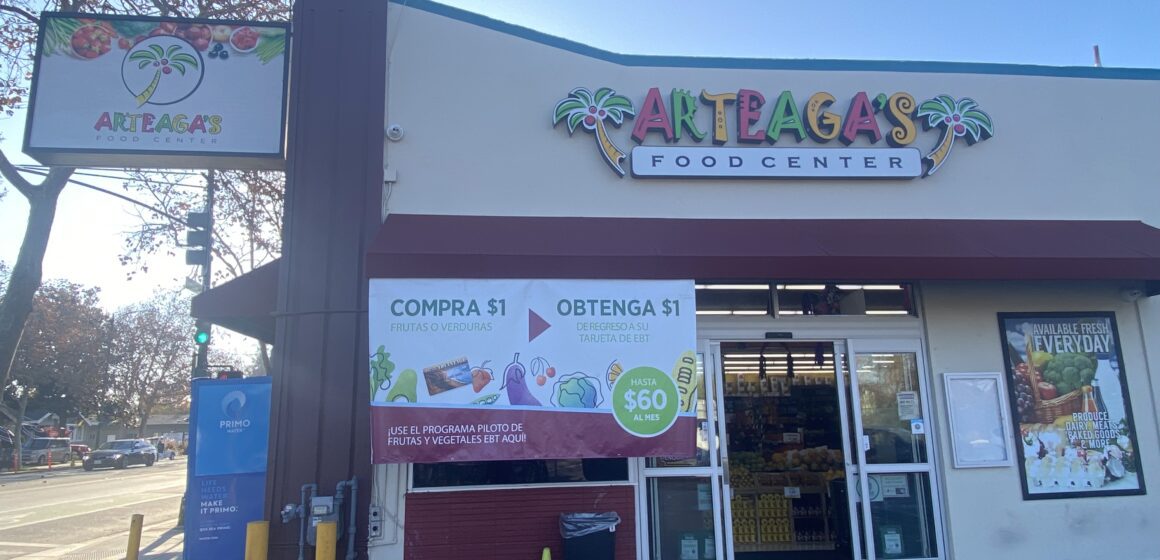Grocery stores are bracing for how federal cuts to food stamps will affect their businesses.
Grocers who accept food assistance payments through the Supplemental Nutrition Assistance Program (SNAP) for the majority of their sales are going to take the greatest hit with the federal passage of the “Big Beautiful Bill.” The massive spending and tax bill cuts $186 billion from SNAP, known as CalFresh in California, over the next decade.
Lupe Lopez, owner of Arteaga’s Food Center, said the ramifications will be far reaching. She has five locations in Santa Clara County — three in San Jose, one in Santa Clara and one in Gilroy.
“It’s going to impact everyone, not just grocery stores,” Lopez told San José Spotlight. “The amount of money that the food stamps represent is huge, and that amount of money stays in the community. That’s money that is paid to employees, paid to do investments, to do other things.”
CalFresh provides low-income families a monthly stipend for groceries. The change represents a 20% reduction in food stamp benefits, the largest cut in the program’s history.
Lopez said CalFresh accounts for roughly 15% of sales in her Gilroy store. She anticipates losing about $500,000 annually at this location. The financial hit will take hold once the new federal fiscal year starts in October. To deal with the cuts, Lopez said she will need to raise the prices on produce or carry less pricey items. But she’s not willing to sacrifice the quality of her produce.
“As a business, you find other ways to become creative and perhaps keep your doors open, or maybe you have to close, but you have more options than the consumers do,” Lopez said.
Jessie Medina, sales supervisor at wholesale distributor Freshko Produce Services, said he’s having conversations with grocery stores and farmers on how to prepare for the federal changes. Freshko provides produce for hundreds of grocery stores across California, including in Santa Clara County.
“The best (advice) that we can (give grocers) is just watch what they order,” Medina told San José Spotlight. “We have been talking to the local farmers and distributors, and they’re seeing the change, and so they’re trying to get creative on their pricing and what they’re planting.”
In the 20 years Medina has been in the food retail business, he said he’s never seen what’s happening now with tariffs and cuts to public services.
“This year is different than all the other years,” Medina said. “(There’s) so many things happening in the federal government. It’s really impacting the consumer.”
Yolanda Lopez, who owns two Mi Rancho markets in San Jose, said she’s not going to be as phased by the CalFresh cuts because a majority of her sales don’t come from the government program.
“I don’t think it’s going to have a big impact, because people have to eat,” Yolanda told San José Spotlight. “They’re going to get the money to buy the food somehow.”
The new CalFresh rules expand the work requirement age to 64 and people without a disability must work at least 20 hours a week in order to receive benefits. States will be required to shoulder some of the costs, something the federal government previously took on entirely.
In Santa Clara County, where CalFresh participation is at its highest level in the past decade, these cuts would mean some families could lose or have their benefits reduced if the state can’t fill the gap.
As of last July, the federally funded food assistance program has more than 130,000 individuals receiving food stamps in the county, almost double what it was in 2019, according to CalFresh data. Some 5.3 million Californians rely on food stamps. In 2024, they received an average of $189 per month, totaling $12 billion.
 Lopez said receiving food stamps can be the difference as to whether or not there’s food on the table.
Lopez said receiving food stamps can be the difference as to whether or not there’s food on the table.
“How many people are going to stop being qualified? How many people are going to be hungry?” Lopez said.
Contact Joyce Chu at [email protected] or @joyce_speaks on X.



Leave a Reply
You must be logged in to post a comment.